ASUS MeMO Pad HD7 Review: $149 Nexus 7.1 Successor & Our First Look at MediaTek's MT8125
by Anand Lal Shimpi on July 29, 2013 3:55 PM EST- Posted in
- Tablets
- Asus
- Mobile
- Android 4.2
- MeMO Pad
ASUS' Android Customizations
The MeMO Pad HD7 ships with Android 4.2.2, as well as a few ASUS customizations. ASUS includes its own keyboard by default as well as its own unified notification shade:
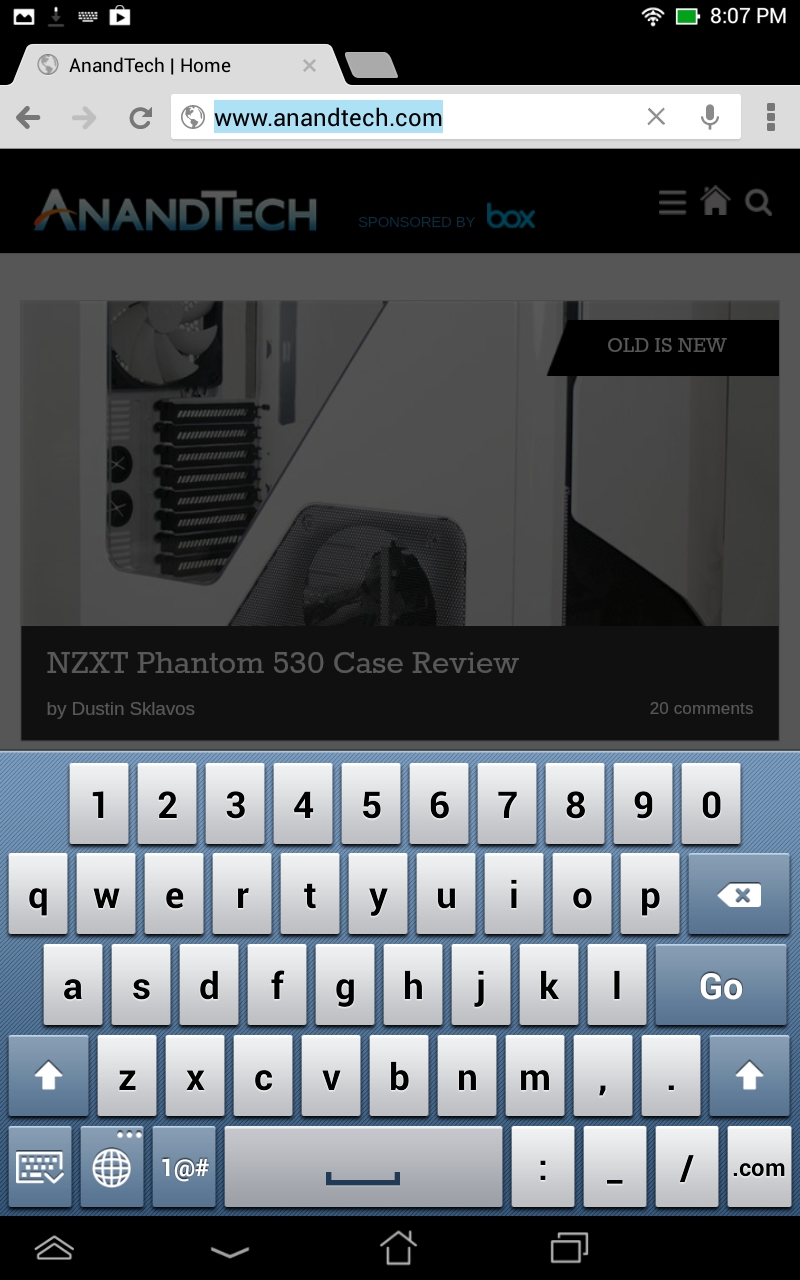
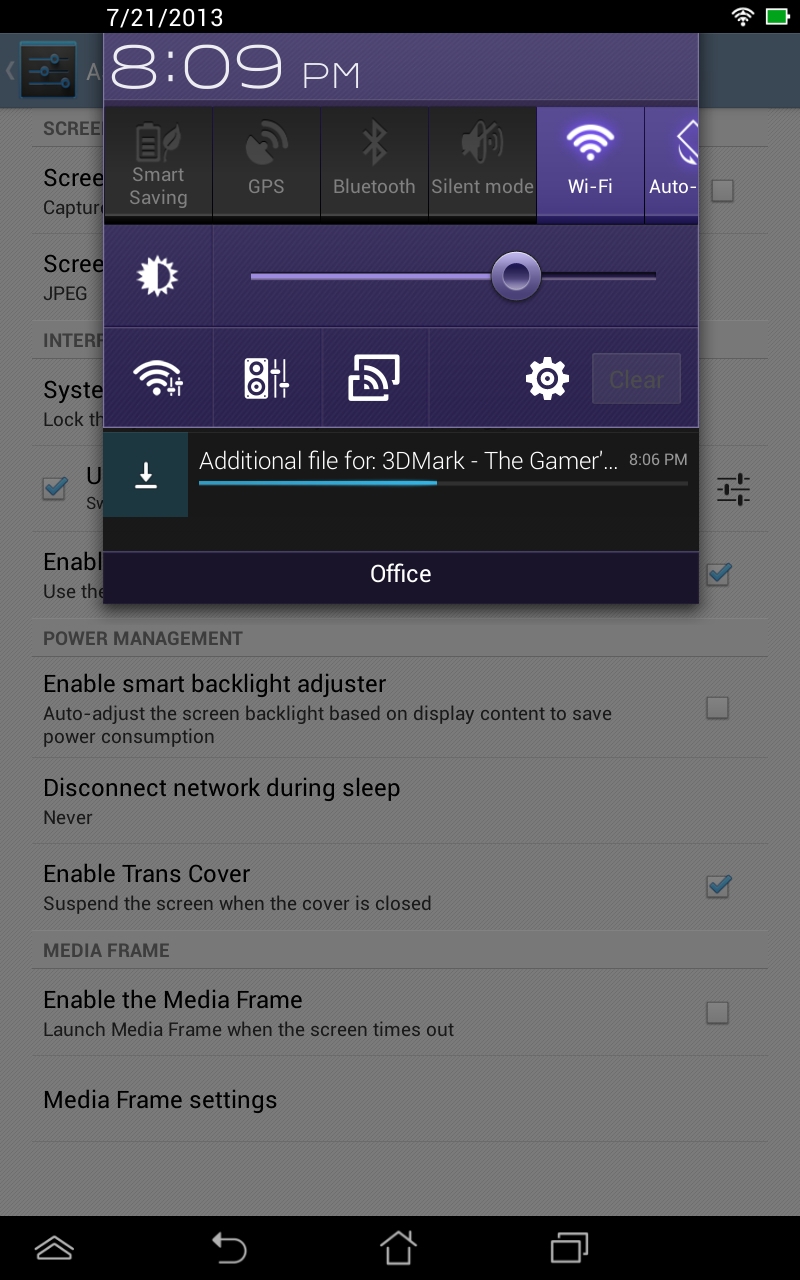
Both of these customizations are reversible. The HD7 includes the stock Jellybean keyboard, and you can revert to the standard notification and quick settings combo shades.
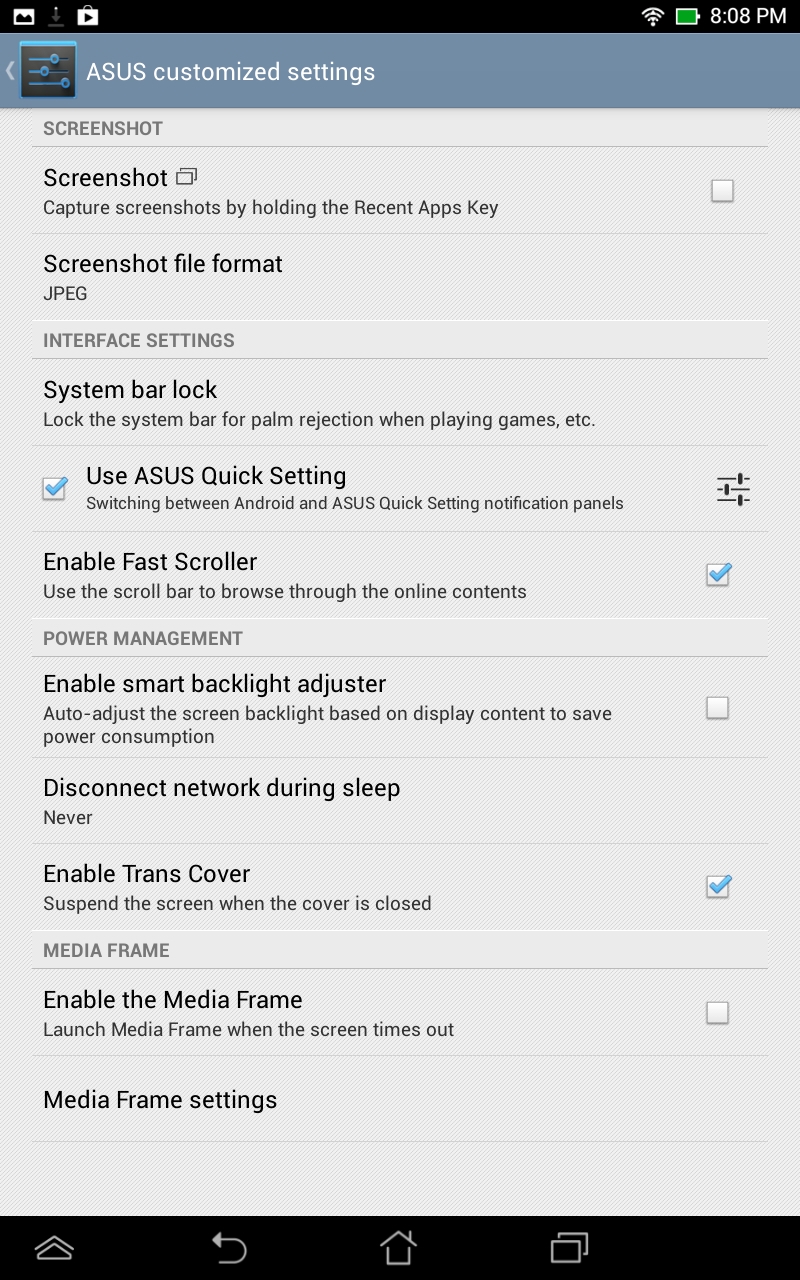
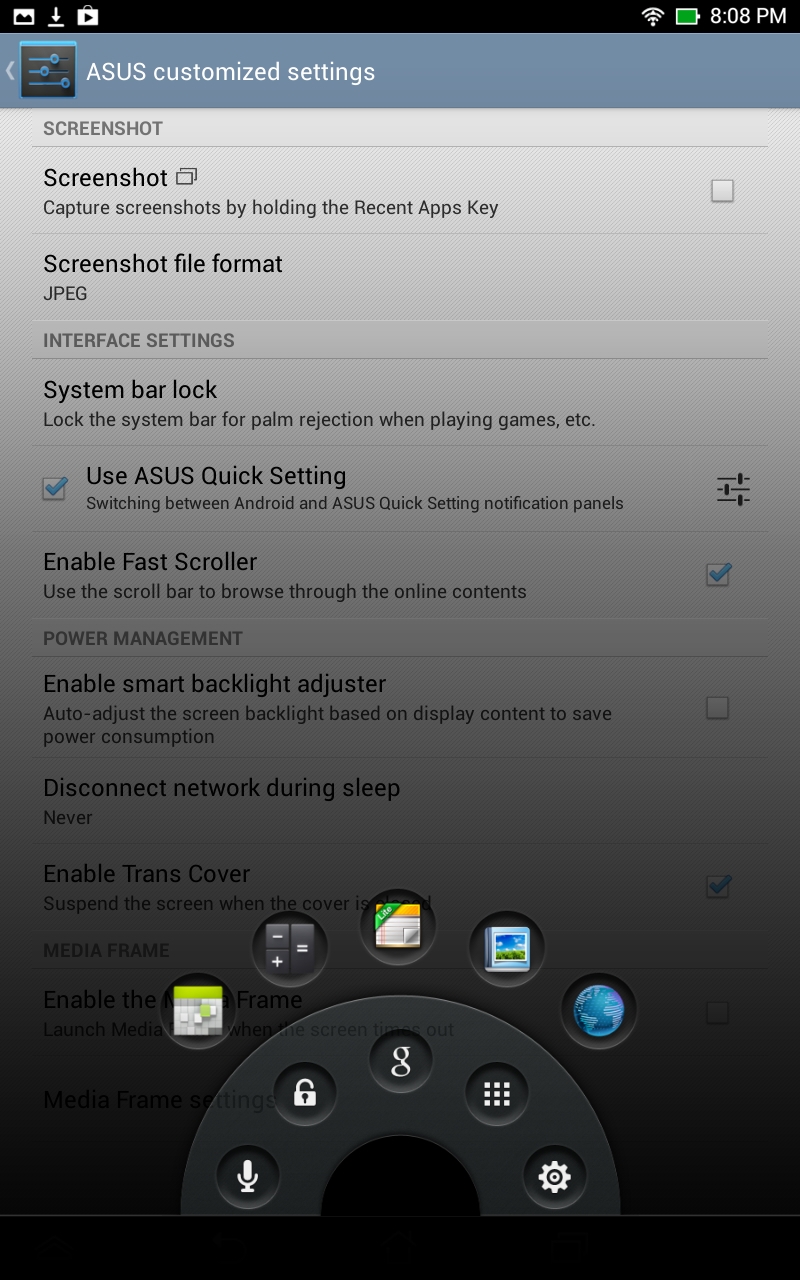
A tap and hold on the virtual home button brings up a shortcut widget that lets you launch voice search, Google Now as well as a number of user definable applications.
Borrowing from what we've seen a number of Android OEMs do lately, ASUS includes support for floating apps/widgets with the MeMO Pad HD7. There's a fourth virtual button to the left of the standard three, tapping it brings up a configurable list of floating apps/widgets. Tapping on any of the icons drops the app/widget on your screen in a floating window. You can move the window anywhere you'd like. Resizing is supported depending on the app/widget. Floating windows persist across app switches, however they disappear the minute you hit the home button. There are video player and browser floating apps, although there's no support for automatically snapping individual windows to half of the screen to easily share display real estate with two windows.

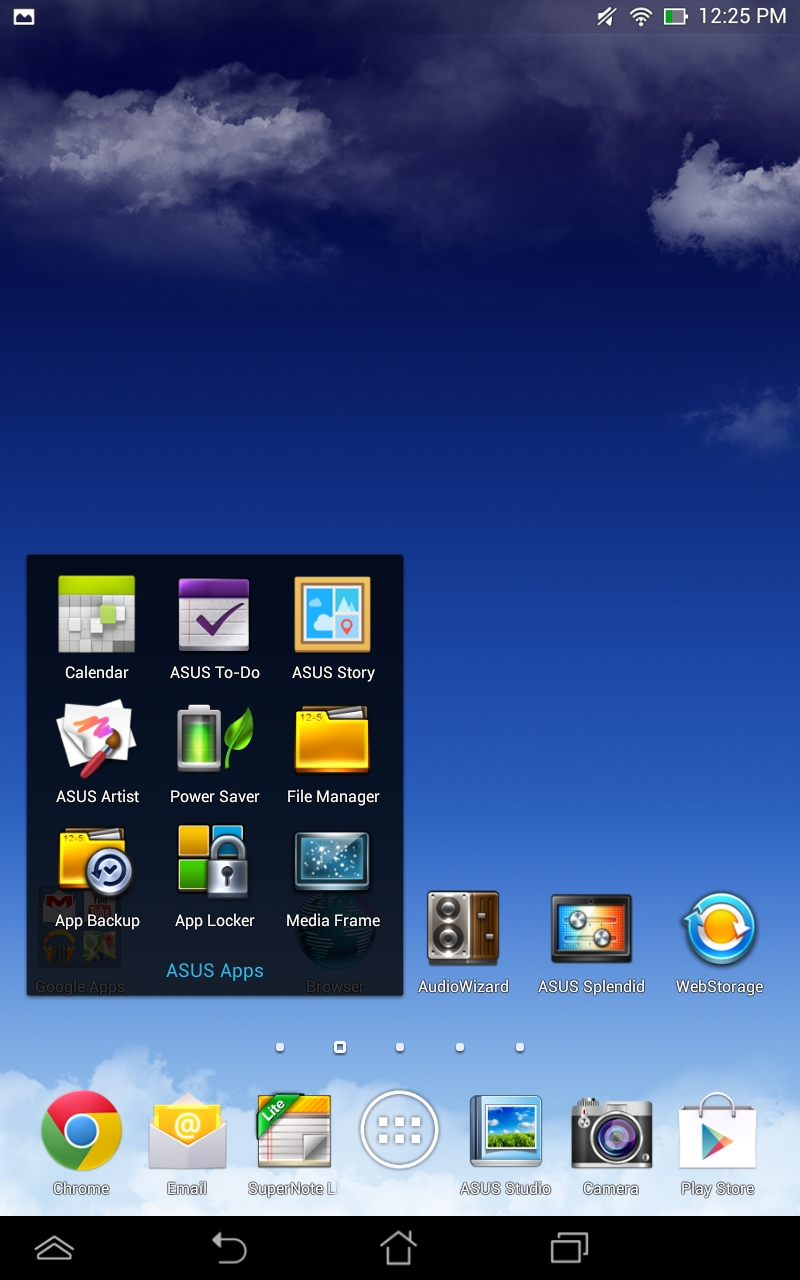
The rest of the experience is pretty much stock. As always, ASUS includes a set of preloaded apps including SuperNote Lite, File Manager, and its own gallery app (ASUS Studio).










75 Comments
View All Comments
n0b0dykn0ws - Monday, July 29, 2013 - link
Given the MicroSD card slot I would highly consider getting one of these and using it for on the go media, especially for the kids.YaBaBom - Tuesday, July 30, 2013 - link
+1 for kids... Especially since this tablet actually outlasts the Nexus 7 in the 3D tests--i.e. gaming. Seems like a pretty well balanced tablet.synaesthetic - Wednesday, July 31, 2013 - link
Shame the 8GB model isn't available in the US. >< I would love to have the 8GB model and throw a bigass sdcard in it, then fill it full of movies.anxyandy - Thursday, August 8, 2013 - link
Hmm, I think the SD card is the only advantage over the Nexus 7! I would just pay the tiny bit extra, for what is one of the best tablets on the market!!!Have a look:
Direct updates by OS vendor Yes vs No It can be updated directly by the OS vendor, so no need to wait until the manufacturer or network provider releases an update.
Significantly higher pixel density 323 ppi vs 216 ppi 49.54% higher pixel density.
Reasonably more RAM memory 2 GB vs 1 GB 1 GB more RAM memory.
Lots narrower 114 mm vs 120.6 mm 6.60 mm narrower.
Thinner 8.65 mm vs 10.8 mm 2.15 mm thinner.
Much faster CPU clock speed 4 x 1.5 GHz vs 4 x 1.2 GHz 25% faster CPU clock speed.
Has NFC Yes vs No Near-field-communication (NFC) allows wireless transactions like payments.
Wireless charging Yes vs No It can be charged w/o any plugs and wires similar to electric shavers or toothbrushes (as extra).
Source; http://versus.com/en/asus-memo-pad-hd7-vs-google-n...
BryanDobbins - Saturday, August 17, 2013 - link
my buddy's aunt earned $14958 past week. she been working on the laptop and got a $510900 home. All she did was get blessed and put into action the information leaked on this site... http://xurl.es/qa0ukuhuznaa - Monday, July 29, 2013 - link
Does the MicroSD slot support SDHX? Or in other words: What size of potential memory expansion are we talking about here?Death666Angel - Monday, July 29, 2013 - link
Found one guy in a forum saying his 64GB SDXC doesn't work, but he didn't elaborate on the file system used or what didn't work.gorskiegangsta - Monday, July 29, 2013 - link
I believe SDXC cards use the ExFAT format.madmilk - Monday, July 29, 2013 - link
Maybe exFAT is the most common, but there's nothing stopping you from formatting an SD card as say, ext4.hrrmph - Monday, July 29, 2013 - link
64GB Micro-SDXC cards from SanDisk come pre-formatted with exFAT.I can attest that they work fine in a Samsung Note 2 and it's widely published on forums that other Samsung devices work fine with these cards.
The Blackberry Z10, and possibly other BB OS 10 devices, require the card to be reformatted to FAT32. This works fine, except that you are subjected to the 4GB file size limit of FAT32. For most uses this isn't a problem, but if part of your usage scenario is wanting to backup a few large files, in addition to all of the smaller, more typical file sizes that you would normally carry, then the Blackberry isn't the appropriate tool.
Also, you cannot then swap Micro-SDXC cards between a Blackberry device and a device that uses the more modern exFAT file system. For example, lets say you shot photos and video using a Z10 and saved it on the Micro-SDXC card in the required FAT32 format. You couldn't then put the card into a more modern tablet's Micro-SDXC exFAT enabled slot to display the photos and video to your friends.
But, if you shoot photos and video on a Samsung device (Note 2, S4, S4 Mini), you could then swap the Micro-SDXC exFAT card over to another device with a Micro-SDXC exFAT enable slot (I believe the Samsung Note 8, Tab 7, and possibly some of the other major name brand soon-to-be-released devices coming out of Asia) to easily display your photos and video to friends and family.
Many of the smaller devices are shooting 1080P video, but I'm not aware of any 7" or 8" tablet with a Micro-SDXC exFAT enabled slot that has the requisite 1080P screen to display the videos in full resolution once the Micro-SDXC card is swapped over to the larger display device.
In addition to capacity expansion, I also find it easier to get files in and out of my devices and PCs quickly with the Micro-SDXC cards.
That is why (for me) it is so frustrating to see Google Asus build such a nice Gen 2 Nexus 7, but leave off the fundamentally important Micro-SDXC slot. My main reason for wanting to replace my Gen 1 Nexus 7 is the lack of a Micro-SDXC slot. The Samsung Note 8 has the slot, but lacks the 1080P display.
Coming back to the Asus HD7, I realize that it is a budget device and makes no attempt to compete at the high end. The screen isn't 1080P for example. But, until we get devices that universally have Micro-SDXC exFAT enabled slots, we are looking at a fragmented market where devices don't inter-operate that well together.
It would be interesting to know what the retail incremental cost of a Micro-SDXC exFAT enabled slot is compared to the cost of a Micro-SDHC slot.
Maybe Asus can't hit their target price on the HD7 with a modern Micro-SDXC slot. Or maybe they are taking a page out of Samsung's book (e.g. S4 Mini) and will under-promise and over-deliver by giving us the more modern slot in the end anyway.